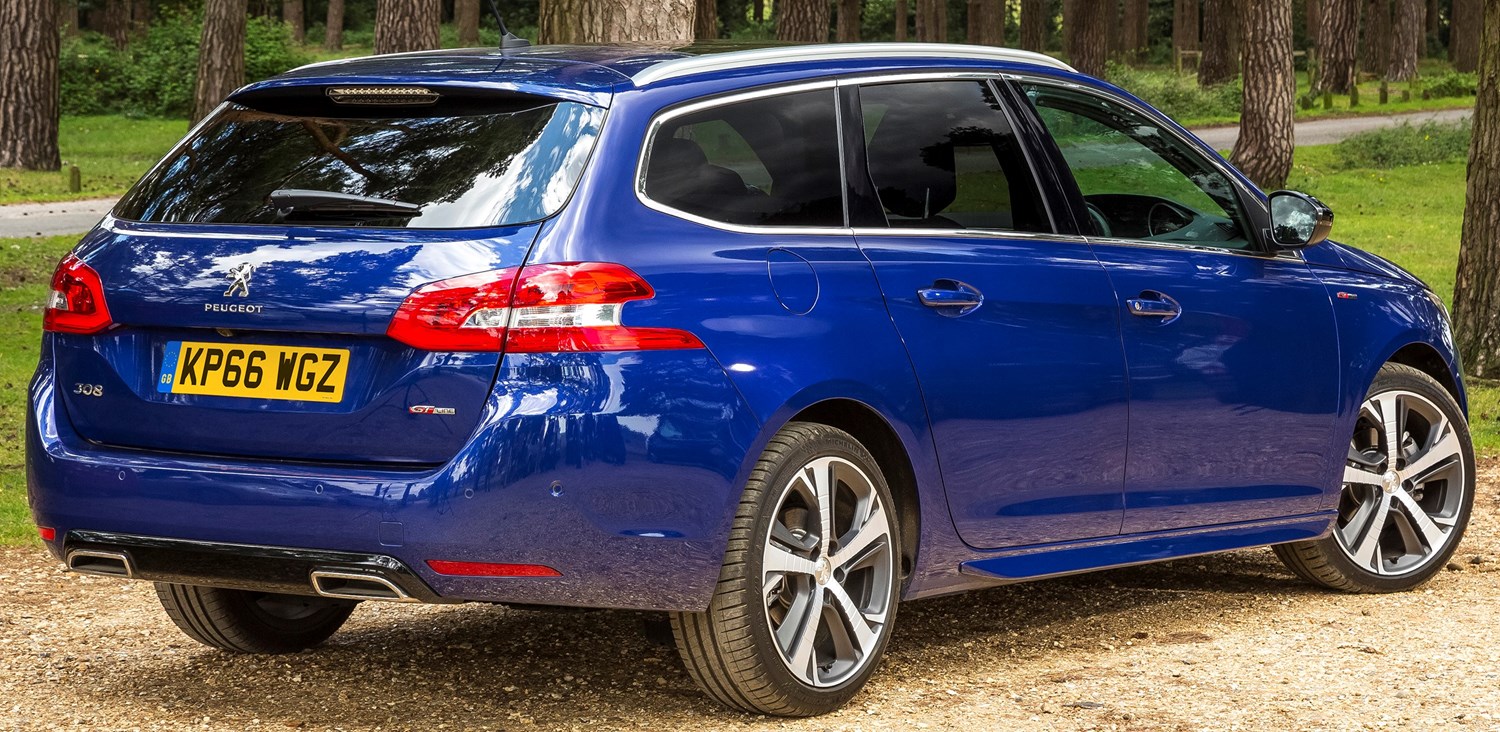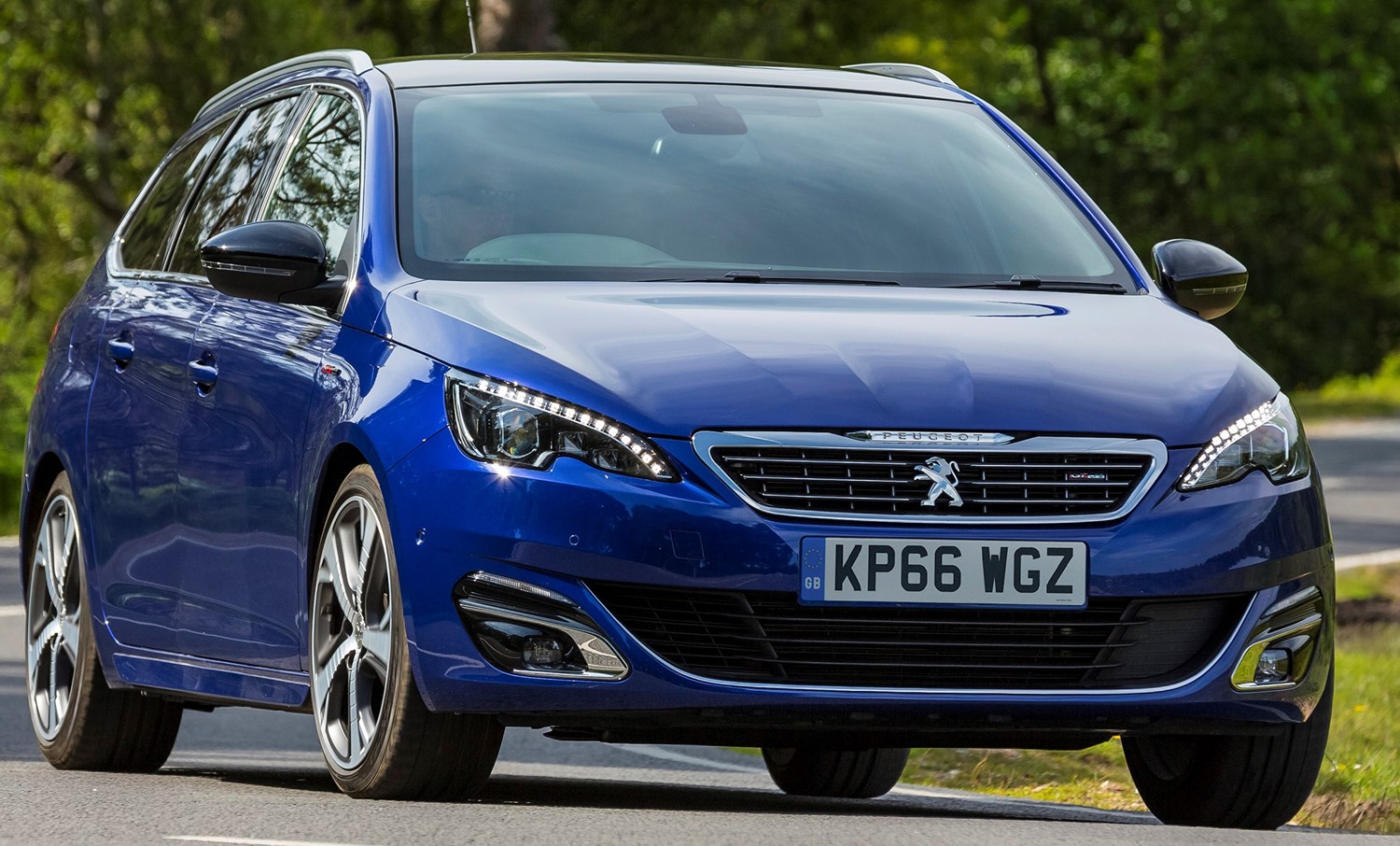Space and practicality
Whether you consider the 308’s spacious and practical depends entirely on your needs.
For those looking for plenty of luggage space, the Peugeot excels. With a 470-litre boot, it’s beaten only by the Skoda Octavia in this segment and comfortably beats the Ford Focus and Volkswagen Golf.
However, if rear passenger space is important the 308 falls down. It’s okay for kids, but adults will find it cramped and uncomfortable even for shorter journeys.
That means that it’s still pretty appealing for young families as the kids will be quite happy in the rear, while the boot is big enough to swallow all the assorted bits and bobs needed for a trip away with young ones.
The Peugeot 308 was tested by Euro NCAP in 2013 and received five stars. It excelled in adult protection, getting a score of 92 per cent, while its child occupant score was a respectable 79 per cent.
Engines
There’s a good variety of engines to suit every need, from low running costs to performance driving.
There are two petrol engine with five different power outputs between them. The 1.2-litre engine is available with 81bhp, 109bhp and 129bhp. The middle of the two offers the best economy, with 70.6mpg and CO2 emissions of 95g/km. This is because the less powerful engine does not come equipped with stop and start technology.
For buyers looking for a bit more performance, the 1.6-litre petrols are the best port of call. Offering 202bhp in GT trim and 268bhp in full GTI trim, they’re not very economical but offer the most fun.
As for diesels, the 1.6-litre unit is available with 98bhp or 118bhp. Again, the higher powered engine is the most economical, achieving 91.1mpg on the combined cycle.
The larger 2.0-litre engine is available with 148bhp and 179bhp, with the first of the two here being more economical by returning 72.4mpg on the combined cycle.
There are three transmissions available, with a five- and six-speed manual and a six-speed automatic. The lack of a sixth gear in the cheapest manual will mean that fuel economy will suffer for those who do motorway speeds regularly, so avoid if that’s the case for you.
Running costs
Where the Peugeot 308 really excels is in running costs, with the diesels in particular offering excellent fuel economy.
Unless you do very few miles, it’s best avoiding the entry level petrol as it’s not as economical as its stop/start-equipped equivalents, so the initial saving will quickly be negated.
The petrol engines offer impressive fuel economy in 1.2-litre guise, with the smaller-wheeled versions hitting more than 60mpg. It’s the diesels that win here though, offering about 80 to 90 miles per gallon.
And it’s good news for tax, too. Most diesel variants emit less than 100g/km of CO2, with the worst culprit emitting just 108g/km. All cars cost £140 per year after the first year, while the first year cost is based on emissions – the cheapest diesel 308 costs £100 in the first year, while the most expensive costs just £140.
For those buying a first-generation car used, opt for the 1.6-litre diesel for cheap running costs. It offers about 70mpg and is tax-exempt.





